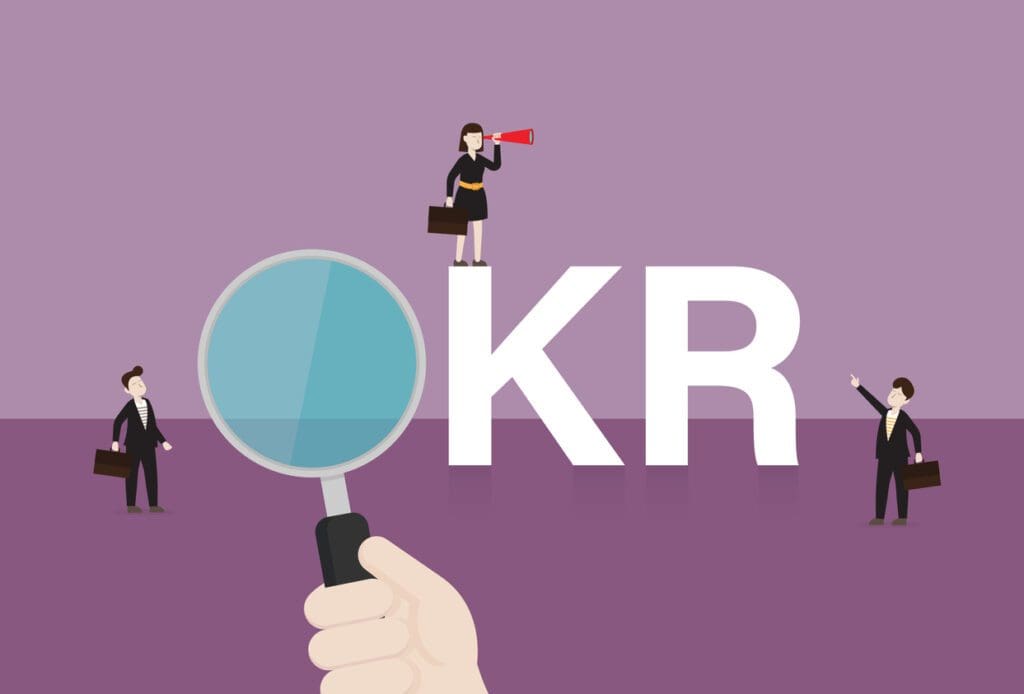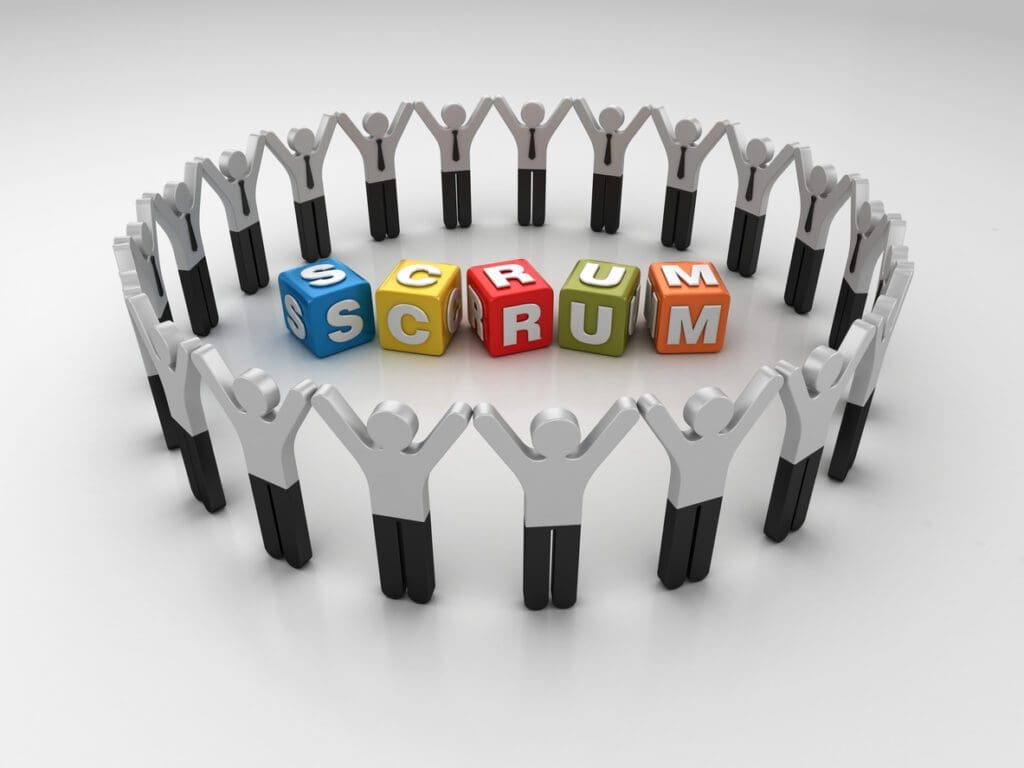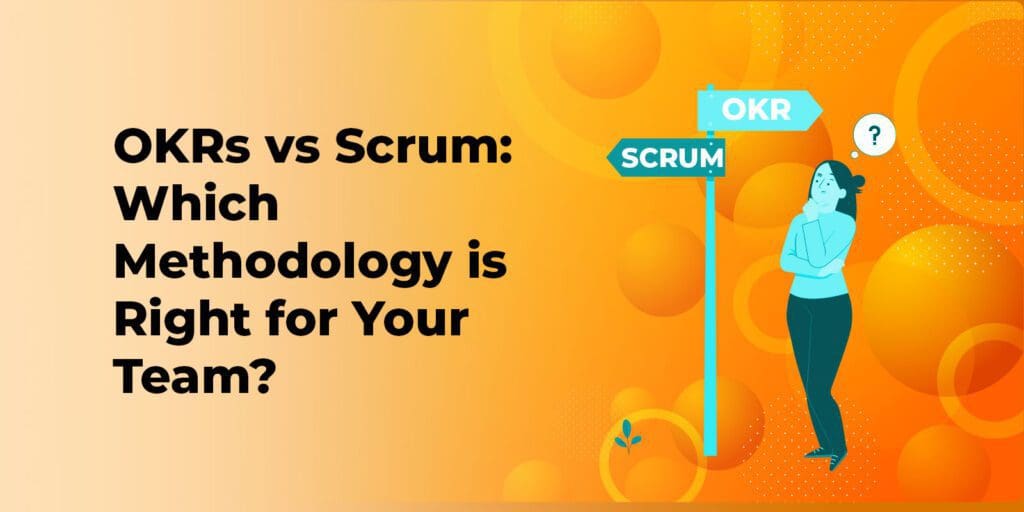Table of Contents
OKR vs Scrum: Which is Best for Your Business?
Are you looking for ways to improve your team’s performance and achieve your objectives? If so, you may have heard of OKRs and Scrum. These two methodologies have gained popularity recently as businesses seek to optimise productivity.
While both OKRs and Scrum share the goal of increasing productivity and achieving objectives, they approach this goal in different ways and focus on different aspects of team performance.
In this blog, we will explore the similarities and differences between OKRs and Scrum, examine the unique features of each methodology, and help you decide which one might be the right fit for your team.
Whether you’re a team leader, a project manager, or an individual looking to stay on track with your goals, this blog is for you. So grab a drink, get comfortable, and let’s dive into the world of OKRs and Scrum!
What is OKR?
OKR is a goal-setting framework that aims to align individual and team goals with the organisation’s overall objectives. OKR (Objectives and Key Results) was invented by Andrew Grove, the former CEO of Intel, in the late 1970s. Grove developed the OKR system to help Intel set and achieve strategic goals.
The framework was popularised by Google in the early 2000s and has since been adopted by many organisations, including LinkedIn, Twitter, and Airbnb.
To get a detailed insight into the OKR platform, Click Here


OKRs consist of two parts.
- Objectives are qualitative statements that define what an individual or team wants to achieve.
- Key Results, however, are quantitative measures used to track progress towards the objectives.
By combining Objectives and Key Results, teams can stay focused on their goals and improve employee engagement by providing them with clear direction and measuring their progress effectively.
OKRs methodology are versatile goal-setting tools that can be applied to various business areas. Different types of OKRs are designed to serve specific functions in different fields.
Examples of OKRs include Sales OKRs, CEO OKRs, HR OKRs, and many more.
What is Scrum?
Scrum Framework is an agile framework for managing and completing complex projects. The framework was developed in early 1990 by Jeff Sutherland and Ken Schwaber, who were both software development professionals.
Scrum emphasises teamwork, communication, and iterative progress towards a defined goal. Scrum is based on the principles of transparency, inspection, and adaptation.


What is the Scrum framework?
Teams may offer services more successfully by using the Scrum framework. It is supported by three pillars: transparency, inspection, and adaptation.
- Transparency – Applicable data is available to all parties.
- Inspection – Organisation often evaluates its efficacy and makes necessary corrections.
- Adaptation – Team modifies its plan which is in line with the project’s success.
OKR vs Scrum: Key Differences
While OKR and Scrum share some similarities, there are key differences between the two frameworks.
Difference #1 Focus
OKRs focus on setting and achieving specific objectives and measuring progress towards them. They are designed to help teams align their efforts towards common organisational goals and prioritise tasks that impact achieving those goals the most.
In contrast, Scrum focuses on iteratively delivering small pieces of functionality. It is a framework for project management that emphasises collaboration, communication, and adaptability.
Difference #2 Approach
OKRs are a framework for goal setting that encourages teams to set ambitious, measurable and time-bound objectives. Teams track progress towards these objectives by measuring key results. OKRs help teams to stay aligned and focused on their priorities.
Scrum, on the other hand, is an agile project management framework that emphasises collaboration, iterative development, and continuous improvement. It breaks down complex projects into smaller pieces of work, which are then completed in short sprints, typically lasting two to four weeks.
Difference #3 Flexibility
OKRs are more flexible than Scrum as they can be adapted to suit the needs of different teams and departments within an organisation. They can be used in various contexts, including sales, marketing, and product development.
In contrast, Scrum is typically used by software development teams and is more rigid in its application
Difference #4 Timeframe
OKRs are typically set for a longer time frame, such as a quarter or a year. They are designed to guide teams towards achieving specific long-term objectives.
Scrum operates on shorter time frames, with iterations lasting two to four weeks. It is designed to deliver small pieces of functionality quickly and efficiently.
Difference #5 Metrics
OKRs are based on specific metrics that track progress towards a particular objective. The metrics help teams understand if they are on track to achieve their goal or need to adjust their approach.
Scrum, however, does not have a specific set of metrics. Teams track progress through daily stand-up meetings and sprint retrospectives.
Difference #6 Ownership
In OKRs, individuals are responsible for achieving their objectives and measuring progress.
In Scrum, the team as a whole is accountable for achieving the goals set for each sprint.
Difference #7 Meetings
OKRs do not have specific meetings or ceremonies associated with them, although regular check-ins are encouraged to track progress towards the objectives.
Scrum has several specific meetings, such as daily stand-up meetings, sprint planning meetings, and sprint retrospectives.
Difference #8 Team Size
OKRs can be used by individuals, small teams, or large departments within an organisation. It does not have specific roles associated with them. Anyone can create and track their objectives.
Scrum is designed for teams of 7-9 people, although larger teams can be divided into smaller sub-teams that work independently. Also, Scrum has several roles, including Scrum Master, Product Owner, and Development Team.
| S.No | OKR | Scrum | |
|---|---|---|---|
| 1 | Focus | OKR is a Goal-setting Framework focused on individual and team goals. | Scrum is a Project Management Framework focused on project goals |
| 2 | Approach | It is used to achieve a specific goal. | It focuses on managing and completing complex projects |
| 3 | Flexibility | It is more Flexible. | It is Comparitively Less Flexible |
| 4 | Timeframe | OKR allows individuals and teams to set and adjust their goals throughout the year. | Scrum requires a defined set of sprint goals to be completed within a set timeframe |
| 5 | Ownership | It can be used by any team, regardless of their technical expertise. | It is best suited for teams working on software development projects. |
| 6 | Team Size | OKRs can be used by individuals, small teams, or large departments within an organisation. | Scrum is designed for teams of 7-9 people |
| 7 | Metrics | OKRs are based on a specific set of metrics. | Scrum does not have a specific set of metrics |
| 9 | Meetings | OKRs do not have specific meetings. | Scrum has several specific meetings |
Conclusion
Both OKR and Scrum are effective frameworks for managing projects and achieving business goals. However, their differences make them better suited for different types of projects and organisations
OKR is more suited for non-technical teams that require flexibility in setting and achieving goals, while Scrum is better suited for technical teams that require a defined process to manage complex projects. Ultimately, the choice between OKR and Scrum depends on the organisation’s specific needs and goals.
If you have any further questions or doubts regarding OKRs, we recommend visiting our blog on Frequently Asked Questions (FAQs) about OKRs. It can provide you with more information and insights on the topic.
Ready to unlock your business’s full potential with OKR? Sign up now and gain exclusive access to expert resources and tools for implementing OKR effectively. Take the first step towards driving remarkable results today!
FAQs
How Scrum works in project management?
Scrum offers a flexible and iterative technique which complements project management. It entails decomposing the project into more manageable tasks known as “sprints” and distributing them to cross-functional teams.
Why OKRs and Scrum could boost productivity
The goals of Scrum and OKR are the same: Ensuring clients receive value through more agile project management and more productive cooperation. To further increase agile and continuous value delivery, OKR adoption might be added.
What function do OKRs and Scrum serve in many companies’ efforts to restructure their business models?
The rise of new company types led to multiple shifts for many firms. As they search for quicker procedures and better resource management, companies grow more competitive., Scrum and OKR have contributed to improving outcomes for businesses that require immediate guidance.



